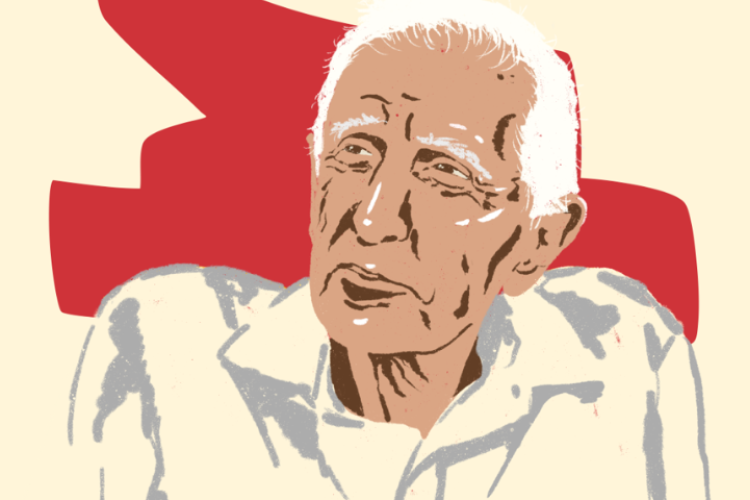Affordable Housing and Supportive Services

INCREASE THE SUPPLY OF AFFORDABLE HOUSING AND SUPPORTIVE SERVICES FOR PEOPLE WHO ARE HOMELESS OR AT RISK OF HOMELESSNESS.
When paired with supportive services, affordable housing can end and prevent homelessness and build stronger more stable communities. Supportive services—such as mental health care, substance use treatment, job assistance, and case management—are essential because many people experiencing homelessness—particularly those with histories of chronic homelessness—face complex barriers that housing alone cannot solve.
TOGETHER WE MUST:
Prioritize affordable housing for extremely low-income (ELI) households earning at or below 30 percent of the Area Median Income—or $35,800 annually for a family of four.
Homelessness Prevention. Because ELI households are the most vulnerable to housing instability and homelessness, prioritizing ELI households directly reduces the risk of homelessness, which in turn reduces the strain on emergency rooms, hospital systems, and other crisis intervention services.
Social Justice. ELI households are disproportionately composed of people of color, people with disabilities, people in low wage jobs and seniors. Prioritizing their housing needs promotes social justice and counters long-patterns of systemic racism, discrimination and exclusion.
Public subsidies are needed. The private market alone cannot produce an adequate supply of affordable housing for the lowest income renters. Public subsidies are needed to bridge the gap between what ELI households can afford to pay and the cost of market rate housing.
- Establish firm guidelines. We must establish firm guidelines to ensure that housing funds are used to address the needs of our lowest income neighbors and those who are most affected by housing insecurity.
- See e.g. Housing Trust Fund Interim Rule at 24 CFR § 93.250 (requiring grantees to use at least 75 percent of their HTF funds to assist ELI households, with the remaining funds used to assist very low-income households (VLI) earning up to 50 percent of AMI).
See e.g. The Philadelphia Coalition for Affordable Communities calling on City Council to earmark 50 percent of all federal, state and local housing dollars for households earning 25 percent of Area Median Income (AMI) or less.
Preserve affordable housing by awarding contracts to projects that serve the most vulnerable people for the longest period of time. Housing developers who receive LIHTC funding are only required to rent their units at affordable rates for 30 years and as a result, developments built before 2000 are aging out of their affordability requirement.
- Respond to the needs of people who are homeless with complex medical and behavioral health conditions by investing in projects that combine low-barrier housing, healthcare and supportive services. Assign behavioral health supports to housing providers. Fund programs at the level required to meet population needs.
- Ex: HUD-VASH (HUD-Veterans Affairs Supportive Housing): HUD-VASH is a collaboration between HUD and the VA that combines rental assistance from HUD with case management and clinical services from the VA to provide permanent supportive housing for homeless veterans. Responsible for decreasing veteran homelessness by more than half since 2010.
Ex: Housing First. Housing first is an approach to housing that prioritizes providing people experiencing homelessness with permanent housing rapidly and without preconditions such as sobriety, employment, or participation in treatment programs. Once housed, individuals can engage in voluntary supportive services to help them maintain their housing and improve their well-being. Housing first is a proven strategy for reducing homelessness, especially among people who are chronically homeless. Associated with high housing retention rates, on the order of 80-90 percent, compared to traditional models.
Strengthen support systems for homeless youth: Unaccompanied youth and young adults (ages 18-24) experiencing homelessness or aging out of the foster care system have unique needs beyond housing. During this crucial phase, they need developmentally appropriate support services to help them transition into independence, such as life skills training, early intervention for mental and behavioral health disorders, and tenant-based rental subsidies they can use until the age of 24, even if they move multiple times. Without such supports, homeless youth and young adults are at significantly higher risk for commercial sexual exploitation, substance abuse, and continued homelessness throughout their life. Investing in a system designed to support the unique needs of young people can also reduce and prevent homelessness in adulthood.
- End Homelessness Among Families
- Scale emergency housing resources for families. Increase the number of non-congregate emergency shelter beds for families, including night-by-night beds. Explore partnerships with local hotels to ensure that no family is ever turned away from shelter.
- Increase access to long-term rental assistance. Provide permanent housing subsidies (including Housing Choice Vouchers) for families who are experiencing or at risk of homelessness.
See: The Family Options Study—a landmark randomized controlled trial of over 2,200 families experiencing homelessness in 12 communities across the U.S. conducted by HUD. When compared to transitional housing, rapid re-housing or usual care, families who received permanent housing subsidies experienced more housing stability, less homelessness, fewer instances of domestic violence and improved wellbeing among adults and children.
Prioritize the housing needs of returning citizens: Individuals exiting the criminal justice system are significantly more likely than their counterparts to experience homelessness and enter the shelter system in the months following their release. Housing is a critical foundation for successful reintegration and a key strategy for reducing recidivism. City agencies that interact with returning citizens, including the Office of Homeless Services, the Department of Behavioral Health and the Department of Prisons, must develop coordinated, data-driven programs and policies to support long-term stability and success.
- Create safe spaces for transgender people who are exiting homelessness: Ensure that all housing programs are open to people who need them regardless of gender identity, and provide ongoing professional development to service providers so case managers and other front-line workers are fully aware of the LGBTQ-specific support service landscape and how to link their clients.



